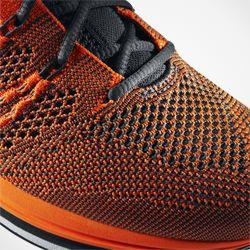Eliud Kipchoge, the 32-year-old Rio Olympic marathon gold medalist from Kenya, gave it his best shot at becoming the first human to break the 2 hour barrier over the 26.2 mile distance using techniques not allowed during actual racing. During this high tech quest on the Monza Formula One track, Kipchoge kept to the unyielding 4:34.8 per mile pace through 35 kilometers. In the next 5 kilometers, Kipchoge kept form but amidst some grimaces lost the pace, inch by inch, falling 10 seconds off the schedule at 40 kilometers.

While Kipchoge managed to run the distance 2:32 faster than the official marathon record set by Dennis Kimetto of Kenya, his 2:00:25 finish [official time, although the clock at the finish line showed 2:00:23] fell 26 seconds short of the audacious goal of the Nike Breaking2 Sub-2:00 Attempt.
There were several reasons why this specialized effort will not be recognized by the IAAF as the marathon record. This was not accomplished in a regulation marathon. Kipchoge was aided by a crew of two dozen pace runners who slotted in and out of the game like NBA subs and starters. The runners were led by a pace car which projected green laser lines defining the record pace. The pace runners formed two phalanxes of a maximally aerodynamic V formations.
The course and conditions were carefully calculated to yield the fastest possible time. The Monza race course was entirely flat and flawless. The temperature at the 5:45 AM start time was about 52 degrees Fahrenheit and the wind was negligible. The route included 17 laps of a 2.4 kilometer circuit.
Kipchoge started the attempt with two other elite runners who faded from record pace before reaching the halfway point. Lelisa Desisa of Ethiopia, started falling back at 18 kilometers and struggled to finish in well over 2:10. Zersenay Tadese of Eritrea stayed on pace until the 20 kilometer mark, then struggled to finish about 5 minutes after Kipchoge.
The three men wore specially designed singlets and wore Nike’s custom-made shoes, the Nike Zoom Vaporfly Elites.
Critics called it a publicity stunt. Other compared it to world automotive speed record attempts. In a nice touch, this enterprise was held on the 61st anniversary of Roger Bannister’s breaking the 4-minute mile barrier.



